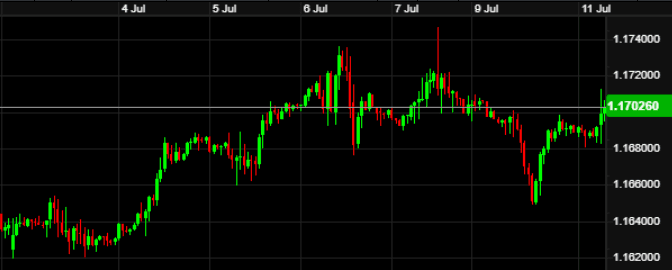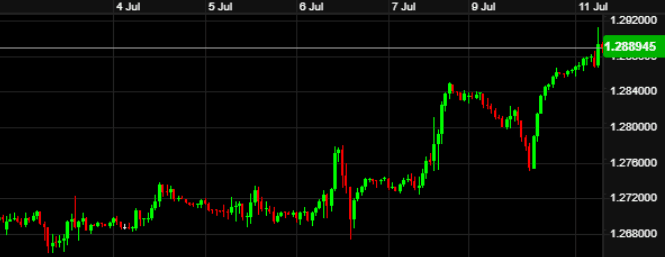ACM Update 10-07-23

A stronger week for sterling last week, hitting highs of almost eleven months versus the Euro and fifteen months versus the US Dollar. As has often been the case of late, the main factor behind the rise was the prospect of UK interest rates remaining higher for longer.
Will the Bank of England deliver what markets expect at the start of August?
Aside from all the British sporting heroics over the weekend, sterling itself had a relatively quiet week. The main question of late seems to be how high the Bank of England go with the base rate, in their battle against inflation. But also, are these hikes making a difference to what looks like a supply-side issue?
Current expectations are for interest rates to hit 6.5% by the end of Q1 2024, with 50 basis point hikes at the next two meetings (3rd August & 21st September). Most economists believe this will push the UK economy into recession.
In his latest summer conference trip to Aix-en-Provence on Sunday, Andrew Bailey rejected the need for the inflation target to be raised above 2% in order to “help”. He has maintained for a while that the bank have “flexibility” as to how quickly they get inflation back to 2%, but made it clear this shouldn’t be confused with moving the goalposts.
Very little by the way of hard data last week from the UK. Halifax house prices showed a slight drop, and Manufacturing PMI data was lacklustre. Overall though, the prospect of interest rates remaining higher for longer was enough to push GBP to its highest level in eleven months against the Euro, and fifteen months versus the Dollar.
The recent moves for Sterling-Euro can be seen in the below chart:

Christine Lagarde was also in Aix en Provence last week at the same ECB event as Bailey. Her speech contained the usual rhetoric of “inflation has started to decline” & “we still have work to do”. The next ECB meeting is on 27th July before their summer break.
In terms of data, Eurozone manufacturing numbers were also underwhelming coming in below 50 across the board. Retail sales for the bloc came in showing a 0.0% growth for the second month in a row, now having not recorded a growth figure since February.
Despite a bank holiday on Tuesday for Independence Day, most of the action came from the US data last week. The minutes from their recent meeting showed that nearly all Fed members chose to hold interest rates at their last gathering.
The minutes showed that the decision was largely centred around giving them more time to assess the progress of the economy towards their inflation target. General expectations are that they will likely hike rates again at their next meeting on 26th July.
The rest of the US releases were all jobs market focused. Thursday’s ADP non-farm employment change suggested a major uplift in jobs added to the economy of 497,000 versus 226,000 forecast. This saw the Dollar strengthen by circa 1% against GBP.
Meanwhile, the Non-Farm Payrolls data ended a 14-month run of coming in above expectation, with 209,000 jobs added versus the forecast of 224,000. This is also the lowest number of jobs added since January 2022.
Recent Dollar moves can be seen below:

Elsewhere:
The Reserve Bank of Australia held interest rates at 4.10%, a contributory factor in AUD weakening last week. GBP-AUD is now at its highest since the start of the pandemic.
Canadian unemployment unexpectedly went back up last month to 5.4%. This is its highest since March 2022.
This week:
Monday – Andrew Bailey speech (16:00 UK time)
Tuesday – UK Unemployment & Claimant Count (07:00), German ZEW Economic Sentiment (10:00)
Wednesday – RBNZ interest rate announcement (03:00), Andrew Bailey speech on Financial Stability report (09:00), US CPI inflation data (13:30), Bank of Canada interest rate announcement (15:00), Fed Beige Book (19:00)
Thursday – UK GDP m/m exp -0.3% (07:00), ECB meeting minutes (12:30)
Friday – French bank holiday (Bastille Day)
With all focus now on the Bank of England and their upcoming policy decisions, Andrew Bailey’s speeches will be closely monitored this week. Wage growth continues to rise, which is a contributory factor towards inflation if you ask the MPC members.
Outside of that we have other central banks releasing their latest policy announcements, from New Zealand and Canada. The RBNZ are expected to hold their base rate after recent hikes up to 5.5%, whereas the Bank of Canada are forecast to opt for a 25 basis point rise.
For those looking to buy USD from sterling, we are seeing incredibly beneficial prices at present, a fifteen month high as already mentioned. The impetus behind this shift though is centred around what the Bank of England & its members say and do over the coming months regarding monetary policy. The current trend will rest heavily on their words. Reach out to the team with any upcoming payments related to USD (and other currencies pegged to the Dollar).
Have a great week and do get in touch if you require any assistance.